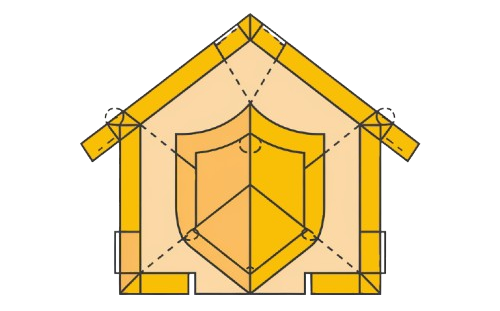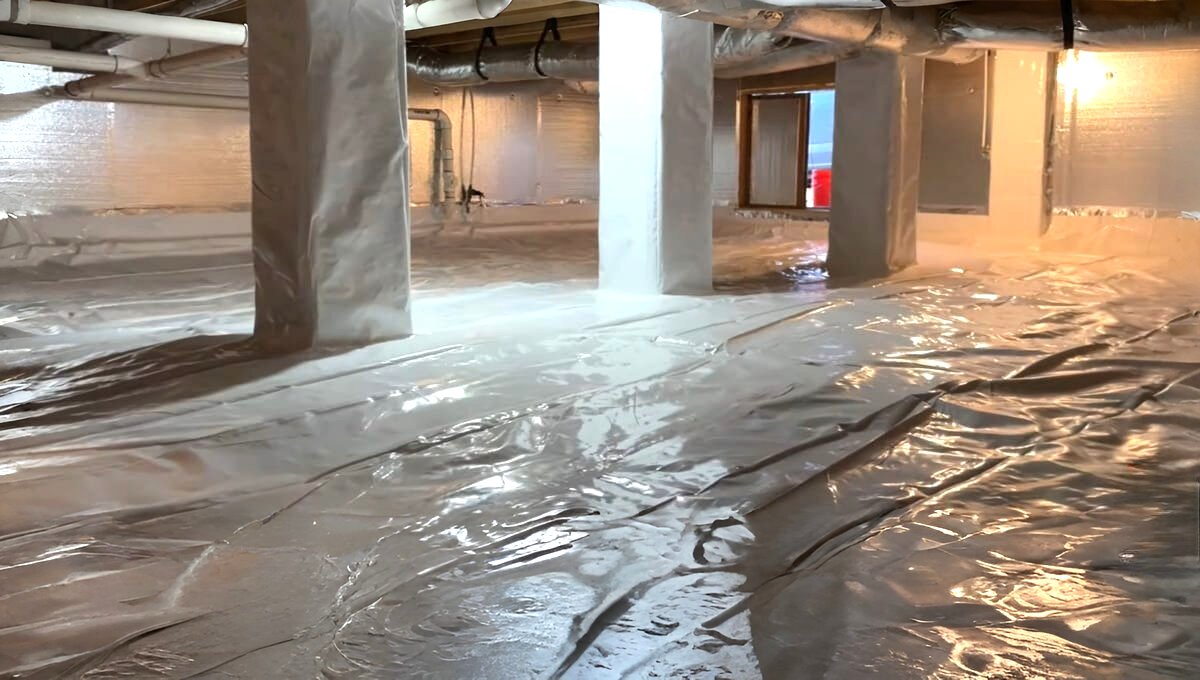A crawl space can quickly accumulate and lock moisture, especially during the warm spring and summer months. Over time, this excess humidity leads to problems like health issues for the dwellers above and a poor household climate. Structural damage to piers and the floor further highlights why encapsulation is so critical for homeowners looking to improve their home.
From my experience working on older properties, I’ve seen how encapsulation not only enhances energy efficiency but also boosts the value of a home. A comprehensive overview of its benefits reveals that it’s a right choice, even with its potential drawbacks. If you’re planning a renovation, encapsulating this vulnerable space can help protect your house and avoid serious, expensive repairs down the line.
What is Crawl Space Encapsulation?
Encapsulation is a fancy way to describe wrapping your crawl space with a thin, single-layer plastic liner, often referred to as a vapor barrier. This protective feature helps prevent moisture entry and keeps the area dry by sealing the walls, floor, and vents. The process may also include installing a dehumidifier, creating a clean and protected environment, and adding drainage trenches or a specialized radon membrane to reduce levels of harmful gases.
From my experience, the goal of this method is not just to insulate but to maintain a dry environment while ensuring the home stays safe from outside elements. Professional help is often necessary for inspections, identifying repairs, and making the process as seamless as possible.
Why Is Encapsulating Your Crawl Space Important?
Encapsulating your crawl space is important because an open and unprotected area directly exposes your home to issues like moisture, mold, and even animals or insects. Over time, soil-related problems can also lead to dampness in the basement, musty smells, and poor indoor air quality, which may compromise your living environment. I’ve noticed that leaving this area unprotected is like leaving your front door open, inviting problems into your home.
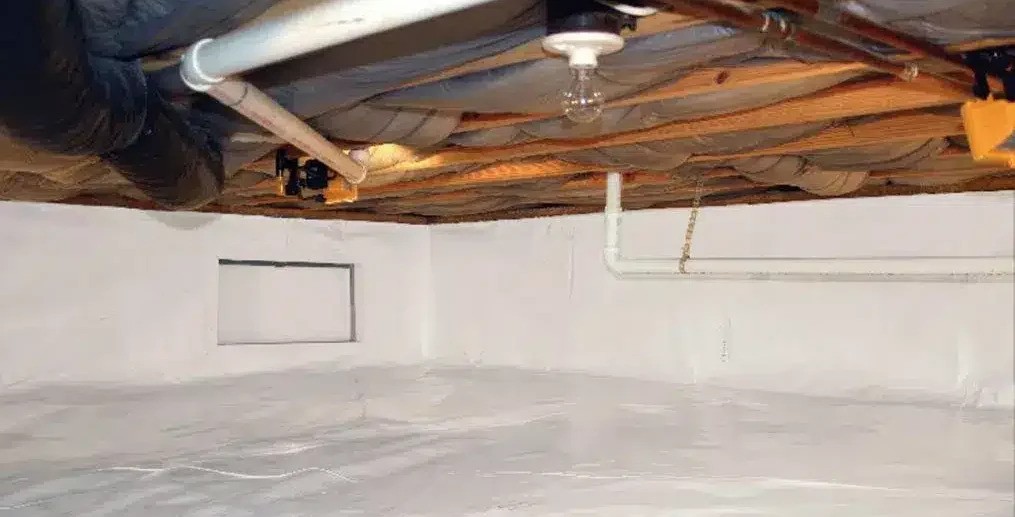
For homeowners, the benefits of encapsulation are clear—it helps protect your home, enhances energy efficiency, and lowers utility bills. By addressing moisture-related issues, it creates a healthier, cleaner environment, making it a wise investment for long-term protection.
Insulating vs. Encapsulating Your Crawl Space
Insulating and encapsulating your crawl space often go hand-in-hand, but they serve different purposes. Insulation focuses on improving your home’s energy efficiency by keeping the area warm and preventing pipes from freezing and bursting. Common techniques include spray foam or rigid boards, which also offer some waterproofing properties. However, encapsulation takes it a step further by creating a moisture-tight seal with a vapor barrier and dehumidifier to prevent mold growth and protect against water damage.
In my experience, both options provide significant benefits. While insulation improves air quality by reducing pollutants that can enter your home, encapsulation delivers a comprehensive solution to manage moisture and soil seepage, effectively sealing outside elements. Combining these methods can increase your home’s value and ensure your space stays insulated and encapsulated at the same time, making it a true investment in your property.
Also Read: Can You Use Spray Foam Around Water Pipes?
Crawl Space Encapsulation Pros and Cons
When deciding whether crawl space encapsulation is the best option for your home, it’s important to weigh the pros and cons. While the benefits of encapsulating often outweigh the drawbacks, there are considerations to keep in mind, especially if your home includes a waterproof basement or requires significant upgrades. Here’s a table of key points to help you in your decision.
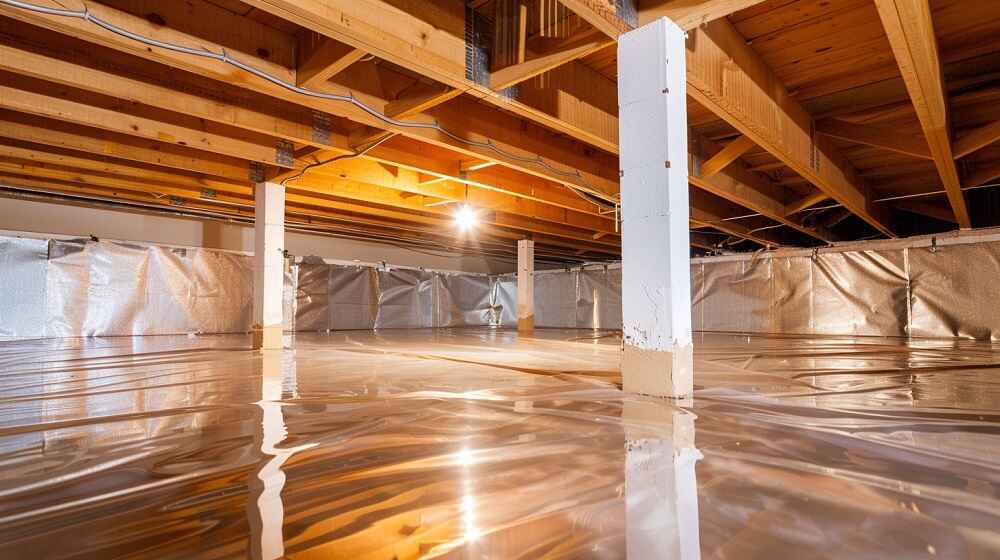
Crawl Space Encapsulation Pros
- Protects against mold, fungus, pests, and insects
- Increases energy efficiency and improves indoor air quality
- Reduces radon levels and helps prevent structural damage
Crawl Space Encapsulation Cons
- High upfront cost
- Added maintenance and potential HVAC upgrades required
- Risk of gas buildup
From my experience, the benefits of encapsulation make it a worthwhile choice, particularly in homes that need better air quality or protection from moisture. However, the upfront costs and maintenance requirements are factors to consider before deciding.
Benefits of Crawl Space Encapsulation
Many homeowners believe that the benefits of crawl space encapsulation far outweigh the cons, especially when considering the repercussions of letting the outdoors seep into your home.
Prevents Mold and Mildew Growth
A crawl space that’s left open becomes a magnet for moisture, leading to mold, fungus, and mildew growth. These unsealed areas create the perfect habitat for fungi colonies, which thrive in dark, humid, and damp environments. This doesn’t just harm your home’s structure, but also introduces musty odors, spores, and micro-toxins into your living space, causing respiratory issues and allergic reactions. Encapsulation stops this by sealing the space and eliminating the conditions where mold and mildew grow, saving you from costly and disruptive remediation.
Also Read: What Causes Mold in Crawl Space?
Keeps Pests Away
An open crawl space can feel like a hosted dinner party for termites, mice, roaches, and even cute fluffy squirrels. These critters treat it as a rent-free venue, sneaking into walls and floors while causing serious damage to your home. Encapsulating your crawl space closes off access points and eliminates vermin, making it harder for pests to nest or breed. Not only does this protect your home, but it also creates a healthier household environment by keeping pests out for good.
Also Read: How to Keep Rodents Out of Crawl Space?
Increases Energy Efficiency
One of the standout benefits of encapsulation is how it improves energy efficiency. By using cell foam insulation or a vapor barrier, you can prevent energy loss and keep your crawl space properly sealed. This means no more frigid floors in the winter, which your bare feet will thank you for. Additionally, your HVAC system won’t have to work as hard, leading to lower utility bills and greater comfort throughout the year.
Improves Indoor Air Quality
The air you breathe in your home is more connected to your crawl space than you might think. Ducts, cracks, and openings allow air to flow from this space into your house, bringing along mold, pollen, and other contaminants. Encapsulation helps improve air quality by sealing the area and preventing these pollutants from entering. It also removes toxins and reduces unwanted humidity, creating a healthier and more comfortable environment. In my experience, this process not only eliminates allergens and dust but also combats pathogen-ridden vapor, which can trigger asthma or worsen allergy symptoms.
Additionally, encapsulation promotes emotional and mental wellness by addressing the Sick Building Syndrome often linked to poor air quality. Sealing the space helps tackle airborne spores, ozone pollution, and other harmful elements, making your home a safer place to live.
Protects the House’s Structural Integrity
Excessive moisture build-up in your crawl space can compromise your home’s structural integrity. It weakens load-bearing piers and damages foundations, creating costly issues over time. Encapsulation helps prevent structural damage by sealing the space and reducing the risk of termites, pests, and water infiltration. I’ve seen firsthand how unaddressed dampness leads to wood rot, sagging floors, and even cracks in concrete foundations.
By encapsulating, you can protect your home’s wooden structures and prevent deterioration caused by humid, damp, or flooding conditions. This process ensures that your home remains sturdy and avoids expensive repairs down the line.
Reduces Radon Levels
Radon is a dangerous radioactive gas commonly found in basements and crawl spaces. Encapsulating your crawl space with a radon membrane reduces the levels of this gas in your home, protecting your family’s health. It’s a simple yet effective step to eliminate related health issues and make your living space safer.
Cuts Heating and Cooling Costs
A properly encapsulated crawl space includes a thick layer of internal insulation on the walls and a vapor barrier on the floor, creating a buffer against external temperature extremes. This means your home stays warm in the winter and cool in the summer, reducing the workload on your HVAC system. I’ve noticed that lower AC usage translates to significant energy savings, with electric bills becoming much more manageable. Encapsulation cuts heating and cooling costs while making your home more energy-efficient and cozy.
Increased Home Value
For homeowners looking to sell, crawl space encapsulation adds numerous benefits to your property. It’s a valuable investment that enhances the likelihood of boosting home value. A well-maintained crawl space, sealed with moisture barriers, demonstrates proactive care, which potential buyers view as a worthwhile feature. While the value increase isn’t always guaranteed, it certainly makes your home stand out as protected and ready for the future.
Improves the Floor’s Comfort and Longevity
If your home has wooden flooring, a damp crawl space could cause moisture-related damages that lead to expensive repairs or replacements. Encapsulating the space prevents this by insulating the area and keeping out freezing air during winter months. This ensures your floors stay warm and comfortable, even without underfloor heating. From what I’ve observed, this process also extends the lifespan of flooring, making it a smart choice for homeowners who want to avoid frequent repairs.
By addressing these critical areas, crawl space encapsulation not only protects your home but also enhances its comfort, efficiency, and value.
Drawbacks of Crawl Space Encapsulation
While crawl space encapsulation generally protects your home and is considered a good investment, there are some drawbacks to consider before starting this project. These factors might give some homeowners a reason to skip encapsulation or weigh their options more carefully.
Cost Factors
The high upfront cost of crawl space encapsulation is one of its biggest challenges. Homeowners often spend thousands of dollars, with costs ranging from $2 to $10 per square foot. For an average American home, the total can reach $5,500 to $15,000, especially if significant repairs are needed. The materials, labor, and scope of work all influence the final price. While the long-term savings on energy and costly repairs can offset the initial investment, the upfront cost can feel overwhelming for many.
Regular Maintenance
Unlike an unencapsulated crawl space, an encapsulated space requires regular maintenance to stay effective. Vapor barriers, drainage systems, and venting elements must remain in good shape, which means inspections and repairs are necessary if anything fails. You’ll need to inspect your crawl space twice a year and schedule an annual professional inspection to ensure everything is functioning properly. This added maintenance is essential to ensure complete protection, but it’s an ongoing cost that some homeowners might find inconvenient.
Potential Gas Buildup
Another concern with encapsulation is the potential for gas buildup if the space isn’t properly cleaned before sealing. Decaying organic matter or soil in the crawl space can release carbon dioxide, increasing the risk of explosion or health problems. Professionals ensure proper cleaning, preparation, and installation to avoid this issue, but it’s a factor that adds complexity to the process.
You May Need to Upgrade Your HVAC System
Encapsulation can reduce air flow in the crawl space, which may cause problems if you have a combustion-based furnace. In such cases, you might need to upgrade your HVAC system to ensure proper ventilation. If you’re uncertain, a professional service near you can evaluate the area and recommend the best solutions for your home. While this isn’t always necessary, the possibility of an HVAC upgrade adds another layer of cost to the project.
Despite these downsides, many homeowners find the long-term benefits of encapsulation outweigh the challenges, especially when prioritizing protection, energy savings, and home value.
Should I Encapsulate My Crawl Space?
If you’re wondering whether to encapsulate your crawl space, it’s especially important for older homes with vents. Contrary to popular belief, leaving these vents open can make a moisture problem worse, allowing dampness to spread and damage the space. For homeowners living in areas with high humidity, encapsulation is generally a good idea. It’s also a popular choice for those looking to increase energy efficiency and protect their home from long-term damage.
How Much Does Encapsulation Cost?
The cost of crawl space encapsulation can vary widely based on several factors, such as the size of your home, the condition of the space, and the materials used. On average, a homeowner will pay $5,500 to encapsulate their crawl space. However, the price can range from as low as $1,500 to as high as $15,000 or even $30,000 if significant repairs or specialized add-on features like sump pumps and drainage systems are needed. The thickness of the vapor barrier, the number of layers, the type of insulation, and insulation options for crawl space also influence the total cost.
To get an accurate estimate, it’s best to contact professionals. If your crawl space has severe issues like waterproofing problems or requires sealing vents, expect the cost to be on the higher end. These repairs and strategies ensure long-term protection and efficiency for your home.
Does Crawl Space Encapsulation Increase Home Value?
Encapsulating your crawl space not only improves the health of your home but also adds value to your property. While it’s difficult to put a figure on exactly how much value it adds, a properly encapsulated space is a key consideration during appraisals and can serve as an important selling point when marketing your home. It shows buyers that the property is well-maintained and worth investing in, making it a smart decision for homeowners looking to enhance their home’s appeal.
When to Consider Crawl Space Encapsulation
It’s a good idea to encapsulate your crawl space when you notice it’s becoming problematic. There are several telltale signs that indicate your crawl space needs sealing:
- Recurring mold or mildew patches
- The cost of cooling or heating keeps going up
- Your HVAC system is working overtime
- Dampness or condensation around your house
- Chirping and squeaking noises coming from under the floor
- Moisture damage on walls and piers
- Musty smells emanating from floorboards
Prevention is better than cure, so it’s best not to wait until the problem gets bad. If humidity or an infestation is already out of control, the fix could be more costly than simply installing encapsulation early. Sealing the space before something goes wrong ensures your home remains healthy and efficient.
What is the Encapsulation Process for Crawl Spaces?
The encapsulation process for a crawl space is a step-by-step approach designed to protect your home from moisture, mold, and long-term damage. Here’s how professionals typically handle it:
- Install a Vapor Barrier: The thicker the barrier, the better it seals and the longer it lasts. While the industry standard is 12-mil, a 20-mil barrier offers more robust protection against wear and tear.
- Add Insulation: Professionals usually use rigid thermal foam boards with an R-value of at least 10, ensuring they can withstand heat in hot climates. Though some opt for fiberglass or spray foam, these have downsides like reduced durability.
- Seal Cracks and Gaps: Using caulk or sealant, they adhere insulation to walls and perform crack sealing to create an airtight environment.
- Install a Dehumidifier: To maintain optimal humidity levels, a dehumidifier is added to prevent mold growth and wood rot.
- Set Up a Drainage System: A sump pump removes water and directs it toward a drainage system for safe expulsion, protecting the space during heavy rain.
Throughout this process, safety gear like personal protective equipment (PPE) is essential for workers. Hiring a professional ensures your crawl space is encapsulated properly, maintaining your health and the integrity of your home.
How to Encapsulate a Crawl Space
Encapsulating a crawl space is a step-by-step process designed to protect your home from moisture, damage, and poor air quality. Each stage requires careful preparation and attention to detail to ensure the space remains sealed and efficient. Here’s a detailed breakdown:
Step 1: Inspection and Preparation
Before starting, inspect and prepare the crawl space area. The space must be cleaned of old materials, dirt, and damaged insulation. Taking accurate measurements is essential to properly install new vapor barriers and drainage systems. If mold is present, hire a remediation specialist to safely remove it and prevent the spread of toxic gases from combustion appliances into your living areas.
Step 2: Seal with Foam
Seal crawl space vents, doors, openings, and gaps using foam. This prevents outdoor air and moisture from entering the area and keeps indoor temperatures stable. Sealing also reduces air drafts, enhances air quality, and increases energy efficiency, making your home more comfortable.
Step 3: Install Flood Prevention Measures
For homes in flood-prone areas, install flood prevention measures to protect the crawl space from foundation damage caused by heavy rain. A perimeter drainage system and sump pump are excellent options to prevent groundwater infiltration, keeping the area safe and dry.
Step 4: Encapsulate the Crawl Space
The next step is to fully encapsulate the crawl space. Begin by adhering thermal foam board insulation to the walls. Then, cover the walls and floor with a thick, durable plastic vapor barrier. These robust moisture barriers are designed to withstand maintenance traffic and provide long-lasting protection when professionally installed.
Step 5: Install a Dehumidifier
Finally, install a dehumidifier to maintain the space. While the vapor barrier helps seal the area, it doesn’t guarantee it will stay completely dry or moisture-free. A self-draining, energy-efficient dehumidifier channels excess moisture outdoors, eliminating the need for manual emptying and keeping humidity levels proper to prevent further issues.
Each of these steps ensures your crawl space encapsulation is durable, efficient, and contributes to a healthier home environment. Professional help is often recommended for proper execution and lasting results.
How Long Does It Last?
Crawl space encapsulation typically lasts an average of 10-15 years, with some moisture and vapor barriers being rated to endure up to 20 years. However, its lifespan largely depends on factors such as the quality of the material used, how well the area was prepared before encapsulation, the overall job quality, and the level of ongoing care and attention given to maintain it. Proper upkeep ensures the encapsulation remains effective for as long as possible.
When Is Crawl Space Encapsulation Not Recommended?
Crawl space encapsulation is a great solution for many homes, but it’s not recommended in all cases. If your home has severe floor joist damage or other structural issues caused by flooding, these problems need to be resolved first. Encapsulation should only be considered once these underlying concerns are addressed. In cases where water intrusion is a recurring issue, a sump pump or drainage system might be necessary to prevent further damage. Focusing on these structural concerns before sealing the space ensures the process will be safe and effective.
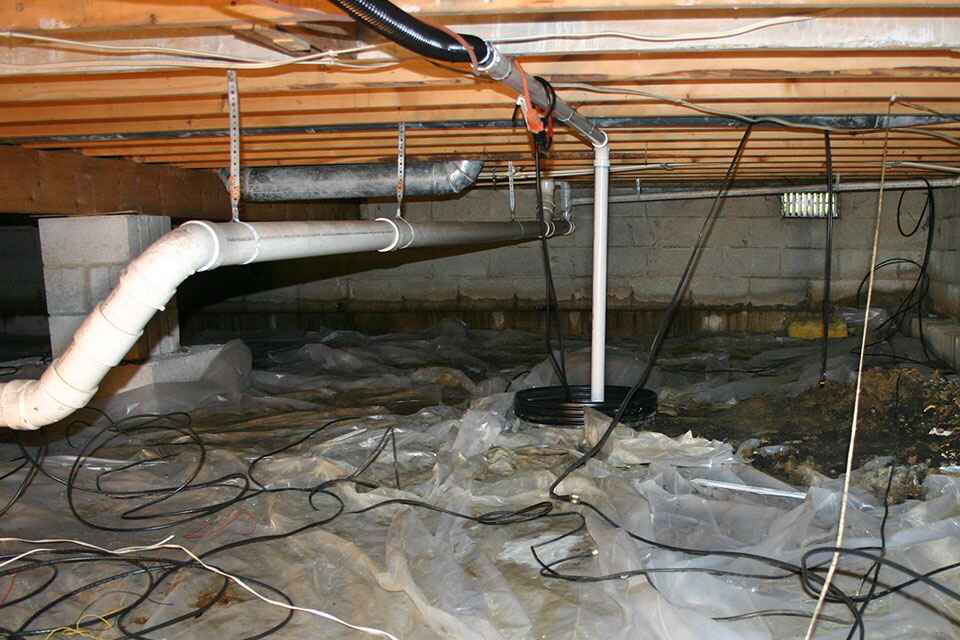
Alternatives to Crawl Space Encapsulation
If encapsulation isn’t the right solution for your home, there are alternatives that can still help manage moisture. Installing a basic vapor barrier or using a dehumidifier are simpler solutions that provide some moisture control without offering the same level of protection as encapsulation. While these options may not be as comprehensive, they can still be effective in reducing moisture and protecting your home.
Final Thoughts
Crawl space encapsulation is a quick and easy way to preserve and upgrade your home, offering long-term benefits that go beyond just boosting property value. It keeps your house energy-efficient, immune to humidity-related damages like mold and rot, and enhances the quality of life for the dwellers by improving overall comfort and safety. Once the project is completed, it requires virtually no maintenance, needing only an annual inspection to ensure seals are holding nicely.
Contact us today to connect with the best experts to ensure your floors stay well-protected and energy-efficient over time.
FAQ
What Are the Negatives to Crawl Space Encapsulation?
A negative of crawl space encapsulation is its potential to create gas buildup. If the crawl space contains gas-producing materials such as decaying organic matter, the gases can become trapped inside, creating a hazardous situation. This buildup might lead to explosions or serious health problems. Proper cleaning and professional installation can help avoid these risks.
How Much Does It Cost to Encapsulate a 1500 sq ft Crawl Space?
The cost of crawl space encapsulation typically ranges from $1,500 to $15,000, with homeowners spending an average of $5,500. Several factors impact the total cost, including the size of the crawl space, materials used, and labor involved.
Is Crawl Space Encapsulation a Good Investment?
While crawl space encapsulation has an upfront cost, its long-term benefits make it a valuable investment. It enhances your home’s structural health, improves indoor air quality, and delivers significant energy savings, ensuring lasting value and comfort.
Is Encapsulation Really Necessary?
Encapsulation is often necessary in areas with high humidity, frequent rainfall, or a high water table. It is essential for preventing water infiltration that can lead to significant problems over time. This process creates a controlled environment that keeps hazards like moisture and mold out of your home.
